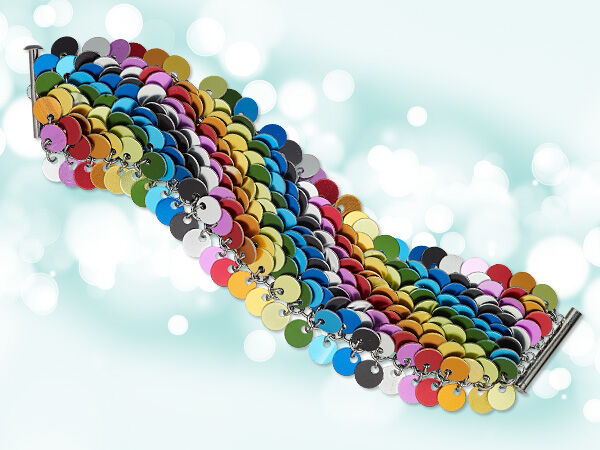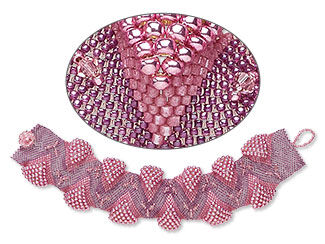Exploring Sensory Jewelry
In recent years, there has been a growing recognition of the importance of sensory-friendly products in various aspects of daily life. From clothing to accessories, individuals with sensory sensitivities seek comfort and functionality without compromising on style. Sensory jewelry has emerged as a trendy solution that caters to the diverse needs of its wearers. Understanding the necessity and benefits of sensory jewelry opens doors for designers to create innovative pieces that integrate comfort, stimulation and fashion.
Sensory Avoiding
For individuals with sensory processing disorders or sensitivities, traditional jewelry can feel uncomfortable or overwhelming. The sensations of metal against skin, the weight of bulky accessories or the jarring textures of certain materials can cause discomfort and distress. This discomfort not only affects their physical well-being but also impacts their confidence and ability to express themselves through fashion.
Sensory jewelry addresses these concerns by prioritizing comfort and functionality. By incorporating smooth or soft textures, lightweight materials and adjustable features, sensory-friendly jewelry offers a gentle sensory experience that enhances comfort and promotes self-assurance.
Smooth
Smooth jewelry pieces can provide a calming and satisfying tactile experience, making them ideal for sensory-friendly designs. A perfect example could be a hard gemstone donut suspended from a silk cord. The smoothness of the stone offers a soothing sensation, while the long length of the necklace ensures it is easy for the wearer to finger or use like a worry stone. Additionally, the hardness of the gemstone makes it durable enough to withstand ongoing use.
Lightweight
Lightweight jewelry is crucial, as heavier pieces can feel overwhelming and distracting. Two ideal examples are a friendship bracelet made of lightweight cord and seed beads and a bracelet featuring wooden beads and delicate charms. Shell beads and nut beads also offer lightweight alternatives as well, adding variety while maintaining the desired lightness. Additionally, the clasp elements on these bracelets are crafted from the cord itself, avoiding metal components that might be scratchy or distracting for those with sensory sensitivities.
Soft
Soft jewelry minimizes irritation and provides a soothing tactile experience. Ideal designs include pieces with silk tassels, which offer a gentle, feather-light touch against the skin. Another excellent example is a bracelet made of smooth beads strung on a soft cord, including a clasp made of the same soothing cord. These designs not only prioritize comfort by using soft, non-irritating materials but also maintain an aesthetic appeal.
Sensory Seeking
Not everyone with sensory issues seeks to reduce sensory input. Some individuals, particularly those with ADHD or autism, may benefit from sensory stimulation to help them focus, regulate emotions or alleviate anxiety.
In response to this need, designers are incorporating fidget-friendly features into their sensory jewelry designs. These features provide tactile stimulation and sensory input, serving as discreet fidget aids that can help individuals maintain focus and manage sensory overload in various environments. From textured beads and movable charms to adjustable clasps and spinning elements, these interactive features offer a hands-on sensory experience that promotes engagement and relaxation.
Texture
Incorporating a variety of textures into jewelry designs can help meet the need for tactile stimulation. Examples of effective designs could include a seed beaded design that offers a landscape-like texture, providing a dynamic and varied surface to explore. A bracelet crafted with hemp cord and natural beads adds an earthy, tactile feel that can be very appealing. Additionally, a necklace with beaded fringe and intricate metal components offers multiple textures and surfaces for sensory seekers to interact with. These designs not only offer visual interest but also provide the tactile diversity that sensory seekers crave, making the jewelry both functional and stylish.
Moving Parts
Elements that move and shift offer a dynamic sensory experience that can be both soothing and stimulating. Ideal designs may include a bracelet with floating beads that glide along the band, offering a delightful sensation of movement. Another example is a bracelet made of stretchy Oh! Rings™, which can be stretched and manipulated, adding an interactive component. Additionally, a necklace with metal circles suspended from the pendant provides a satisfying clinking and swaying motion. These designs not only captivate the wearer visually but also offer the kinetic engagement that sensory seekers enjoy.
Combining Texture and Moving Parts
Jewelry that combines elements of texture and motion can provide an engaging and satisfying experience. These pieces offer both tactile variety and dynamic movement, enhancing the sensory appeal. For example, a bracelet featuring glittering anodized aluminum drops in rainbow colors delivers vibrant visual stimulation and allows the wearer to manipulate the loose, movable drops. Another compelling design is a bracelet made of chainmaille and chain fringe, which provides a rich, tactile texture and the satisfying sensation of flowing movement. A necklace with chain fringe adds another layer of sensory engagement, with the chains gently swaying and shifting. When crafting sensory-friendly jewelry, remember to always prioritize durability. Your pieces need to withstand frequent touching and manipulation to remain functional and appealing for those with sensory needs.
Available also are some pre-made options that can serve as inspiration and complement to your own designs, as well as offering additional choices for those seeking sensory-friendly jewelry. Among these offerings are zipper bracelets, which provide tactile satisfaction with their smooth, sliding motion and spinning rings, perfect for individuals who find comfort in repetitive motion.
Sensory-friendly jewelry not only serves a functional purpose but also empowers individuals to express their unique personalities and preferences. By offering a wide range of designs, colors and customizable features, designers ensure that wearers can find jewelry that resonates with their sensory needs and personal style.
Shop for Your Materials Here:
Have a question regarding this project? Email Customer Service.
Copyright Permissions
All works of authorship (articles, videos, tutorials and other creative works) are from the Fire Mountain Gems and Beads® Collection, and permission to copy is granted for non-commercial educational purposes only. All other reproduction requires written permission. For more information, please email copyrightpermission@firemtn.com.




















